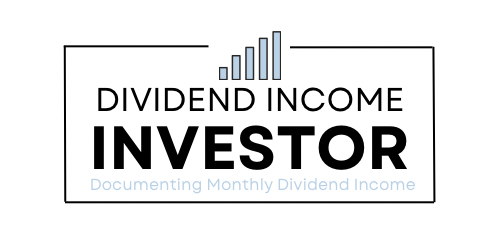4 Tips to protect Wealth when investing in the Cannabis Industry. It’s ok to invest in non dividend paying stocks as longs as you follow these guidelines:
What a day today was for the markets. Did you see Tilray? Are you investing in the Cannabis industry, dividend investors?
I’ve made claims before that I won’t buy a stock unless it pays a dividend. However, the RTC portfolio is reaching a point where a growth position makes sense.
After pondering the demand for the recreational and medicinal marijuana markets, I realized something—it’s similar to the alcohol and cigarette industries. Whether it is legal or illegal, no one can stop the demand.
As such, I have decided to break my rule of buying only dividend paying stocks. I am still very committed to dividend investing, though, and I’m aware this move is purely speculative.
On the other hand, the risk will be calculated, and this is potentially a once in a lifetime opportunity. After all it’s a brand new industry. As a long term investor, I am not just thinking about earning a quick profit either. I’m viewing this as an opportunity to receive 10 years worth of share price increases through earnings in a new industry.
In the interest of protecting wealth, I created this simple guide for investing in the Cannabis Industry more safely.
Investing in the Cannabis Industry – 4 Tips to Protect Wealth
1. Investing in the Cannabis Industry with 10% or less of the value of your portfolio.
Tilray has increased by over 800% since the IPO launched in July this year. At the time of writing this post (September 19, 2018 afternoon), TLRY is up 50% today alone?! Seriously, what the hell? I don’t remember seeing price fluctuations this insane. The company is now valued at over 20 billion but earnings are only 28 million. With that in mind, it’s important to realize that investing in the cannabis industry is speculation. Therefore, only a small amount of your wealth, an amount that you can afford to lose, should be set aside for trading and speculation.
Since I have experience with trading, I am comfortable taking a calculated risk on the cannabis industry. But that doesn’t mean I won’t do my research.
After researching the industry to find a company with distribution, branding, partnerships, sales, and after finding a business with a clear plan to make money, I will invest with up to a maximum of 10% of the value of my portfolio. That includes all cash and dividend asset classes.
2. Keep at least 90% of your money in dividend stocks, Index funds, or Cash.
The other 90% of my assets will remain in dividend paying stocks, index funds, or cash.
A more detailed breakdown of allocation and sectors can be saved for another post. But obviously the primary income stream I’m focussed on building right now is dividend income.
As such, the aim is to maintain a balance of 80% dividend paying stocks, 10% cash, and 10% for growth, speculation, and trading.
You might be wondering why you’d invest in a slower growing stock if Tilray is earning 50% in one day. Well, if you’re wondering why balance is important, it’s because a time will come when this bull market will end. It’s important to have a small amount of flexibility in your portfolio, and it’s important to have a portfolio that can withstand all market types (Bull or Bear).
If a bear market was to occur, dividend income will provide stability and will help to offset the temporary loss of capital.
Furthermore, as the size of a portfolio increases, the protection of wealth becomes more important.
No. 1 rule of investing is “never lose money,” followed quickly by his second rule — “Repeat No. 1. Warren Buffett
3. Don’t Sell—or take principal and invest the profit forever.
I’ve mentioned before that one of my worst mistakes ever was selling Apple. But that’s just one of the stocks I’ve sold too early. Corning, Shoppers Drug Mart, Suncor, Coca-Cola, Walmart, and Apple are just some of the names I sold too soon.
Based on my own experience, it’s best to trust your research and hold onto positions. If you balance your portfolio properly, having one position underperform will not make or break the overall return.
Since the amount you invest in the cannabis industry is an amount you can afford to lose, you should invest for more than 10 years at the least. Or even better, take your principal if/when the money doubles and keep the profit invested forever.
4. Set up Stop limits to protect Wealth.
Because investing in this industry is speculative, you should already maintain a mindset that this money could be gone. Select a stock for 5 to 10 years and consider the money gone.
Although, that doesn’t mean be straight-up reckless with money. Investing in the cannabis industry still requires a similar level of research as selecting dividend income stocks.
In addition, there are more steps you can take to protect your wealth. Perhaps one of the most effective steps is to set up stop limits. In short, stop limits are sell orders that are executed at a preset price. Setting a stop limit allows you to choose the price to automatically exist a position that goes the wrong way.
While stop limits can be useful, I learned the hard way through day trading that they can take your money too. For trading, it’s imperative to know your entry and exit targets before entering the trade.
When it comes to selecting cannabis stocks, it’s also important to know your comfort zone with the fluctuations. If you don’t plan on investing for the long term, you can protect your money with stop limits.
Concluding Thoughts
I am not condoning that investing in the cannabis industry is the right move by publishing this post. Do your own research.
But I do believe it’s wise to focus on capital preservation if you are interested in investing in this space. The decision to speculate or trade is always about risk management.
Since there’s an opportunity for earnings growth over the next 10 years, I plan to invest in this space with set limitations:
I realize this is speculating. In turn, I’m maintaining a ratio of 10% or less in the cannabis industry. I plan to hold for the long term—10 years or more. Whatever happens happens. If I am ever so fortuitous that the stock doubles, I will take my original investment out and keep the profit invested forever. Finally, I plan to establish plans to protect wealth. I can protect wealth with stop limits.
In conclusion, one of the main reasons I am interested in dividend investing is to build a cash flow machine for constant investing.
If I have dividend income being credited to my brokerage account constantly, I will have more cash to invest and speculate with. As mentioned recently, I created an elite scheme to become a full-time investor and blogger.
Although I understand there could be an opportunity cost, I still find trading and growth investing intriguing with 10% or less of my cash. After spending enough years in the market, you start to notice patterns and opportunities to take advantage of.

Disclosure: All opinions are my own. I am not a licensed investment or tax advisor. This site is intended for entertainment purposes only. Blog posts about investments are not recommendations to purchase equities. You should always do your own due diligence and consult a licensed advisor before investing. I have no position in Tilray. However, I am long FIRE.V, ACB.TO, and WEED. The photos used in this post are from Canva. This post contains ads by Google Adsense.


 New Record Blog Users & 39% Traffic Increase | August 2018
New Record Blog Users & 39% Traffic Increase | August 2018
